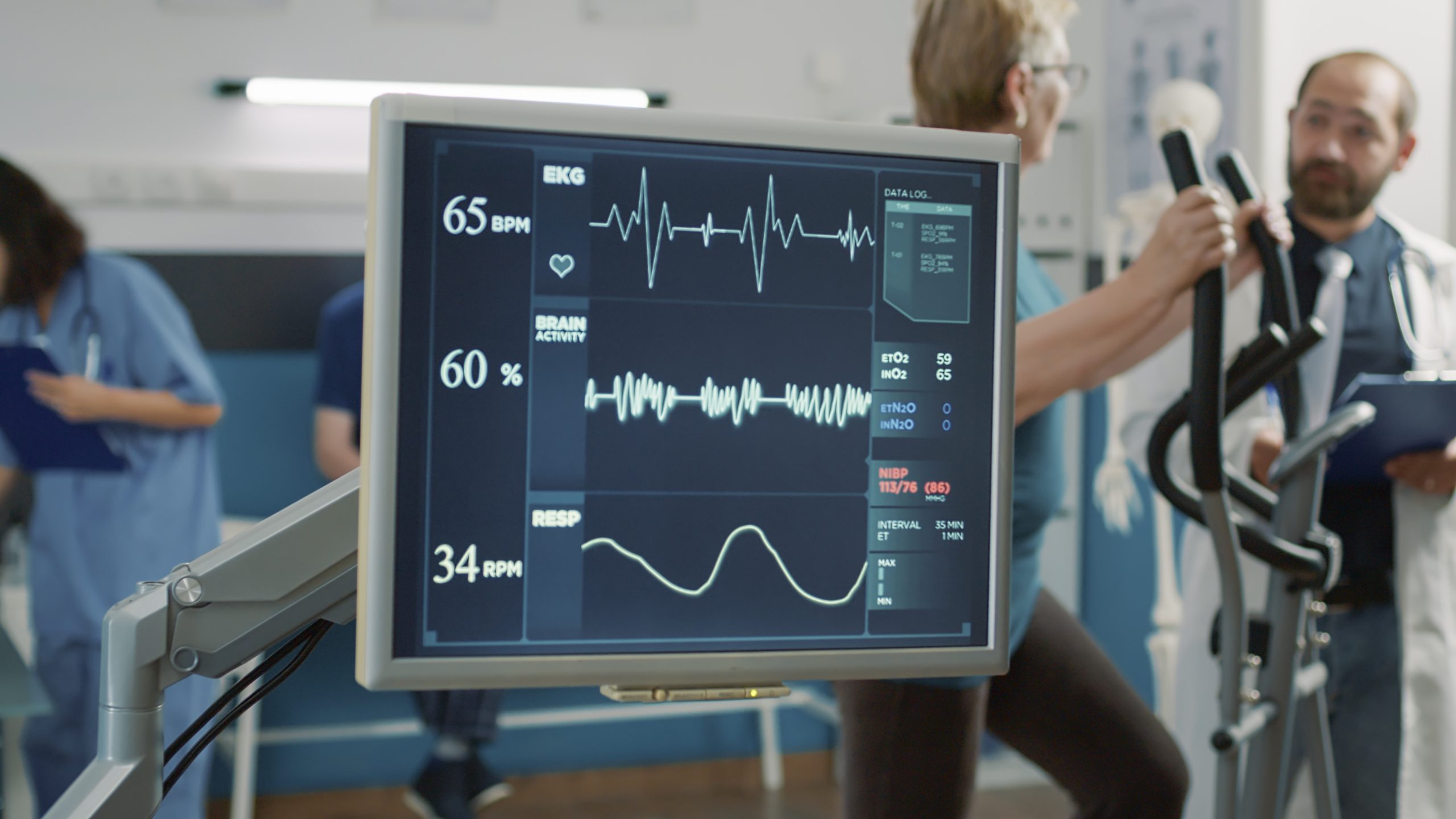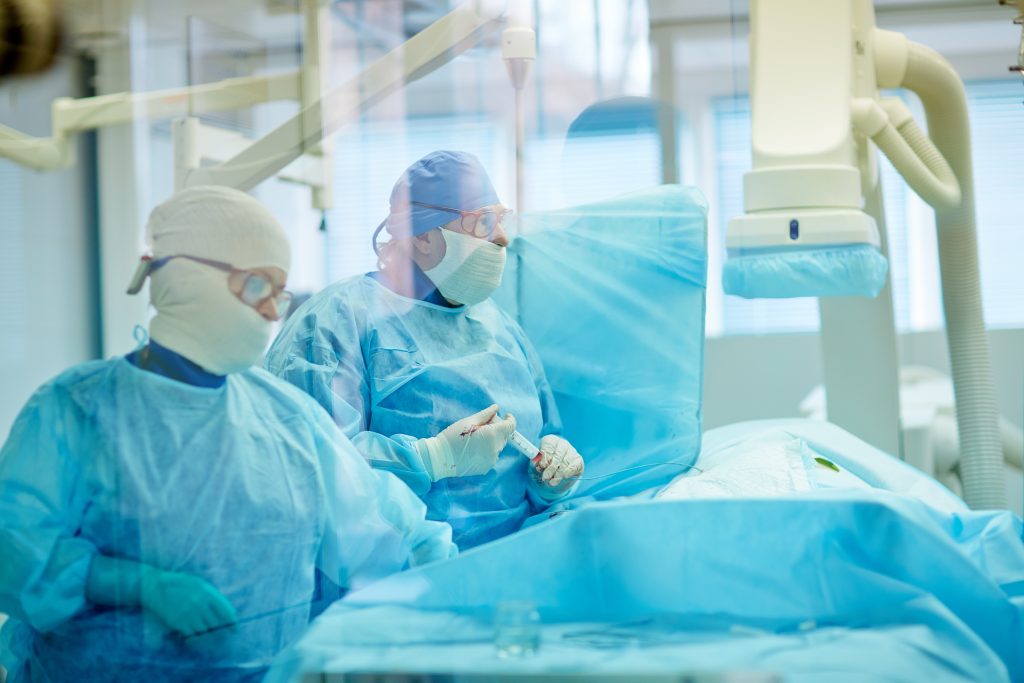Coronary artery bypass grafting Surgery

Coronary artery bypass grafting (CABG), referred to as heart bypass surgery, is a medical procedure that aims to reinstate the circulation of blood in specific regions of the heart. Blockages in the arteries can result in the cessation of blood flow, leading to heart attacks or symptoms similar to one. To restore blood flow, CABG employs blood vessels from different areas of your body to create an alternative route that bypasses the blockages.

Why might I need Coronary artery bypass grafting surgery?
CABG surgery is employed by your physician to address a blockage or constriction in one or multiple coronary arteries, with the objective of reestablishing blood flow to your heart muscle.
Some possible indicators of coronary artery disease are:
- Chest pain
- Fatigue (severe tiredness)
- Palpitations
- Abnormal heart rhythms
- Shortness of breath
- Swelling in the hands and feet
- Indigestion
Types of heart bypass surgery
There are various forms of bypass surgery.

Multiple bypass surgery
When a surgeon needs to redirect blood flow around just one blocked artery, it is referred to as a single bypass procedure. However, if there are multiple arteries with blockages, the surgeon will need to perform multiple bypasses. Surgeons may also undertake other procedures.
- In the case of double blockages in two arteries, it will be necessary to perform two grafts during the bypass surgery.
- Triple bypass surgery is required when there are three blockages, thus necessitating the need for three bypass grafts.
- Quadruple bypass surgery is required when all four coronary arteries are blocked, and it involves performing four grafts to create alternate pathways.
- Quintuple bypass surgery is a procedure where all five main arteries supplying the heart are involved, and it necessitates the use of five bypass grafts.
How Do You Prepare for Bypass Surgery?
Prior to your surgical procedure, you will undergo several medical tests including blood tests, chest X-rays, and an electrocardiogram (EKG). Additionally, your doctor may perform a coronary angiogram, which involves the use of a unique dye to visualize the flow of blood in your arteries.
Your physician will also inform you of any necessary alterations to your diet or daily habits prior to the surgery and adjust your medication as needed. Additionally, it is important to inform your doctor about any natural vitamins or supplements you are currently taking, as they have the potential to impact your risk of bleeding.
You will also have to arrange for post-operative recovery.
Before Coronary artery bypass grafting Surgery
It is important to inform your healthcare provider of all the medications you are currently using, including over-the-counter drugs and herbal supplements that were obtained without a prescription.
During the days before your surgery:
- You may be instructed to discontinue certain medications that impede blood clotting for one week prior to surgery. These medications, such as aspirin, ibuprofen (Advil and Motrin), naproxen (Aleve and Naprosyn), and others similar in nature, can lead to excessive bleeding during the procedure. If you are currently using clopidogrel (Plavix), it is advisable to discuss with your surgeon the appropriate timing for discontinuing this medication.
- Inquire about the medications that should be continued on the day of the operation.
- If you are a smoker, make an effort to quit the habit and seek assistance from your healthcare provider.
- If you are experiencing symptoms such as a cold, flu, fever, herpes breakout, or any other type of illness, reach out to your healthcare provider for assistance.
- Get your home ready for easy maneuverability upon your return from the hospital.
Coronary artery bypass grafting Surgery

Before the surgery, your chest, arms, and legs will be shaved and your skin will be cleaned using an antiseptic solution. It is crucial to refrain from eating or drinking for a certain period prior to the operation. Additionally, you will receive an injection of pre-medication to induce drowsiness and reduce internal secretions.
Heart bypass surgery is carried out using general anesthesia. You can use the saphenous vein from your leg, the internal mammary artery from your chest wall, or the radial artery from your wrist as grafts. Typically, between two and four coronary arteries are grafted, depending on the blockage’s location and severity.
In order to reach your heart, the surgeon can make one of two incisions: either a long cut down your breastbone or a cut under your left nipple. During the procedure, a heart-lung machine is used to keep your blood circulating while your heart is intentionally stopped. Then, a vein or artery is attached to the narrowed part of your coronary artery, allowing blood to flow around the blockage.
On occasions, the procedure is carried out while the heart is not at rest, which is commonly referred to as “beating heart” or “off-pump” surgery.
What occurs following surgery for Coronary artery bypass grafting?
Following surgery, individuals who have had CABG are transferred to the intensive care unit (ICU) of the hospital. Some hospitals may refer to it as a critical care unit. The reason for being in the ICU is due to the specialized training and expertise of the staff, ensuring that they can cater to the specific needs of patients who have just undergone CABG.
After an individual’s condition has stabilized and their doctor deems them prepared, they can move to a standard medical-surgical room within the hospital for the rest of their duration. The typical length of a hospital stay for CABG surgery ranges from 8 to 12 days, with variations depending on whether the procedure was conducted due to a heart attack or stable ischemic heart disease and related issues.
After being discharged from the hospital, the majority of individuals who undergo CABG surgery typically participate in a cardiac rehabilitation program. These programs, commonly referred to as cardiac rehab, are designed to aid in the recovery process and enhance physical strength following intense cardiac procedures, such as heart attacks. Cardiac rehab programs consist of a team of professionals who possess specialized training and qualifications. This team usually includes nurses, exercise physiologists, nutritionists and dietitians, counselors, behavioral health specialists, and doctors.
Recovery
After undergoing a coronary artery bypass graft, the typical timeframe for most individuals to remain hospitalized is approximately 6 to 8 days.
It is recommended that you schedule a follow-up appointment approximately 6 to 8 weeks after your surgery.
It takes time to recover, and each person recovers at their own unique pace.
In general, it is expected that you will be able to sit in a chair within a day, start walking within three days, and successfully navigate stairs within five to six days.
After returning to your home, it is advisable to rest and relax for a couple of weeks.
After approximately six weeks, you should be able to resume most of your regular activities, such as working, driving, and engaging in sexual intercourse. However, if you have a physically demanding job, you might need to extend your time off work.
The majority of individuals regain their full health within a period of 12 weeks.
Treatment in Türkiye:
The medical staff of surgical teams, doctors, and consultants at REHABTÜRK can provide the best treatment options and free consultations, striving to stay up-to-date on the latest medical technologies and methods.
